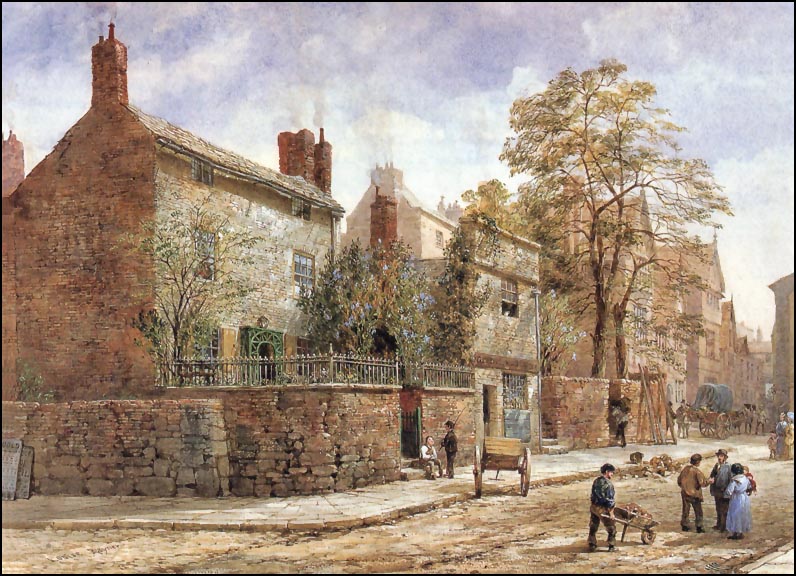Louise Rayner's Paintings of Chester

St. Werburgh's Mount
Louise Rayner's Paintings of Chester

St. Werburgh's Mount
St. Werburgh's Mount stood opposite the south transept of the great Abbey of St. Werburgh (now the Cathedral, named after the 7th century saint whose remains were brought to Chester around 875). The house's last resident was Thomas Hughes who wrote The Stranger's Handbook to Chester, one of our city's finest Victorian guidebooks. Just before his old home was due to be demolished in 1873, Hughes commissioned Louise Rayner to paint this watercolour of it. The buildings that replaced it, retained the old name, St. Werburgh's Mount, but comprised shops designed by the prolific Chester architect John Douglas and erected in 1874. To the left of this corner was later built St. Werburgh's Row, a further row of shops behind a street-level arcade, designed by Maxwell Ayerton in 1935, who (in partnership with Sir John Simpson) is better remembered as being the architect of the first Wembley Stadium, with its world-famous twin towers, built in 1923. (modern photographs to follow). On the extreme right can just be seen what was, when this painting was made, the Music Hall. This remarkable building started life in 1280 as the Chapel of St. Nicolas, built by the monks of the nearby Abbey. Like the Saxon minster before it, the Abbey served the townspeople as a parish church, their services being held in the south aisle of the nave. When this was rebuilt in the 14th century, the monks moved them to the chapel across the road. The new accomodation seems to have proved unpopular as they soon returned to worship in the south transept of the Abbey, which was re-designated as the Parish Church of St. Oswald and actually walled off from the rest of the building to preserve the peace of the monastic community. This unusual situation continued until 1881, long after the monks had gone, when the newly-built of St. Thomas of Canterbury in Parkgate Road became the Parish Church of St. Oswald. The narrow lane next to it where a covered wagon may be seen in the painting still survives today. It leads down to Northgate Street and and bears the evocative name of Music Hall Passage. The fine house outside which the wagon is parked, St. Werburgh's Chambers, was designed by John Douglas and built in 1872-3, so was brand new when this picture was painted. It, too, is also still with us today. |